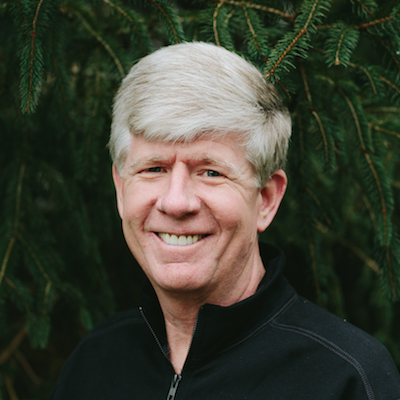Let’s talk together about how we can fence ourselves in sometimes. Let’s talk about this thing I call the Bridge of Transformation. Let me begin to explain what that is.
Thoughts, Feelings, Actions
First, it ties well with the thinking model that we’ve talked about that includes our thoughts, feelings, and behaviors. The thoughts we think lead to the feelings we feel and they, in turn, lead to the behaviors we act out. The opposite is also true. Our actions come from the feelings we feel that come from the thoughts we think. When we want to change those actions, we have to stop and go back to the thoughts we think and change the thought so that we can change the feeling so that we can change our behavior.
Our thoughts, feelings, and actions are connected to this Bridge of Transformation. Let me explain.
Bridge of Transformation
We believe everything we teach is extremely simple, but not easy. Therefore, we make it complicated. And we choose to live in the River of Complication. But, once we cross the Bridge of Transformation, what’s always been extremely simple now becomes easy(er). Things become easy(er) once we understand how our thoughts, feelings, and actions affect who we are.
Though things can become easy(er), we know challenges are always going to be coming at us, but, once we cross the Bridge of Transformation, though things may not necessarily be easy, they can certainly be easy(er).
Let’s try saying these truths together using the following words: simple, not easy, complicated, river of complication, bridge of transformation, simple, and easy…(er). Now, as you read below, say along with me out loud the words below:
We believe that everything we teach is extremely SIMPLE, but NOT EASY;
therefore, we make it COMPLICATED.
And we choose to live in the RIVER OF COMPLICATION.
But once we cross the BRIDGE OF TRANSFORMATION,
what has always been SIMPLE now becomes EASY…(ER).
Now there’s a good chance that if you joined me in saying this out loud you just said “easier.” So let’s try saying this out loud one more time and see if you can say those words exactly as they are written.
We believe that everything we teach is extremely SIMPLE, but NOT EASY;
therefore, we make it COMPLICATED.
And we choose to live in the RIVER OF COMPLICATION.
But once we cross the BRIDGE OF TRANSFORMATION,
what has always been SIMPLE now becomes EASY…(ER).
EASY…(ER) Versus Easier
Now if you said it right that time, you made a very simple process simple. If not, it just makes the point that something really simple may not be so easy. The dots after “EASY,” along with the parentheses around the “ER” are meant to communicate a long pause before you speak the “(ER)” to emphasize how things may not, indeed, be easy or easier, but they can become easy…(er).
This little exercise also shows how we often make pretty simple interactions more difficult because of our own perspectives. We have to realize that crossing the Bridge of Transformation is a pretty simple step and becomes easy…(er) once we understand how connected we are to what’s in our River of Complication and change the thoughts that we think in that River of Complication.
The River of Complication
The question now is what’s in our River of Complication? What’s in there? What are we hanging on to that we ought to let go of? Is it fear? Is it anxiety? Is it excessiveness? Is it anger? Bitterness? Rejection? Pain? Pride? What is that we’re hanging on to in that river that we just keep swimming around in instead of changing our thoughts that so we can cross the Bridge of Transformation?
Here’s an example. Let me ask you a question. Do you think there’s any connection between a little six-year-old boy being sexually molested by a kindergarten school teacher to being fifteen years old and taking antidepressants and anxiety medication, having a spastic colon, and being completely overweight? Do you think there’s any connection to the impact that might have had on his marriage and at 33 being back on antidepressants and at 40 taking a health test showing you’re at the physical age of a 79-year-old, taking all kinds of allergy medicines and anxiety medication, and three rosacea medicines? Do you think there’s any connection between all those things and self-identity and the way we think and what we may hang on to in the River of Complication?
Crossing the Bridge of Transformation to Become a Transformational Leader
This exercise is another way for us to talk together about communication and how it can impact a transformational leader. When we think about the skills, qualities, and attributes of a transformational leader, we have to ask how we get there, how we become that leader that we aspire to be. As we all begin our leadership journey together and come to the Bridge of Transformation, we can remind each other that getting over the River of Complication and across the Bridge of Transformation is pretty simple, but not easy until we actually cross over and then we realize that everything on the other side is actually easy…(er).
Ford Taylor is a leadership strategist, keynote speaker, and the author of Relactional Leadership. As the Founder of Transformational Leadership, he is known as a man who can solve complex business issues, with straightforward practical solutions, while maintaining his focus on people.



